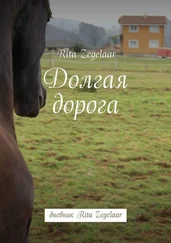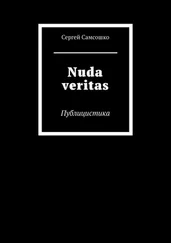Rita Monaldi - Veritas
Здесь есть возможность читать онлайн «Rita Monaldi - Veritas» весь текст электронной книги совершенно бесплатно (целиком полную версию без сокращений). В некоторых случаях можно слушать аудио, скачать через торрент в формате fb2 и присутствует краткое содержание. Жанр: Исторический детектив, на английском языке. Описание произведения, (предисловие) а так же отзывы посетителей доступны на портале библиотеки ЛибКат.
- Название:Veritas
- Автор:
- Жанр:
- Год:неизвестен
- ISBN:нет данных
- Рейтинг книги:3 / 5. Голосов: 1
-
Избранное:Добавить в избранное
- Отзывы:
-
Ваша оценка:
- 60
- 1
- 2
- 3
- 4
- 5
Veritas: краткое содержание, описание и аннотация
Предлагаем к чтению аннотацию, описание, краткое содержание или предисловие (зависит от того, что написал сам автор книги «Veritas»). Если вы не нашли необходимую информацию о книге — напишите в комментариях, мы постараемся отыскать её.
Veritas — читать онлайн бесплатно полную книгу (весь текст) целиком
Ниже представлен текст книги, разбитый по страницам. Система сохранения места последней прочитанной страницы, позволяет с удобством читать онлайн бесплатно книгу «Veritas», без необходимости каждый раз заново искать на чём Вы остановились. Поставьте закладку, и сможете в любой момент перейти на страницу, на которой закончили чтение.
Интервал:
Закладка:
The Place with no Name and its Enemies
All the information and descriptions provided by the chimney-sweep on the “Place with No Name known as Neugebäu” (as it appears in the archive documents), are confirmed by the historians as well as by the numerous studies published and listed in the bibliography. Today the manor is known as Neugebäude. That Maximilian II in his final years was obsessed by the thought of completing Neugebäude, as Simonis recounts, is confirmed by the Venetian ambassador Giacomo Soranzo: cf. Joseph Fiedler (ed.), Relationen venetianischer Botschafter über Deutschland und Österreich im 16. Jahrhundert , Vienna 1870, p. 217.
The ferocious black panther itself really existed. It is reported in the Wiennerisches Diarium (today Wiener Zeitung ) n.483 of 17-20th March 1708: on the afternoon of Sunday 18th March, Joseph, with his consort, and a retinue of knights and ladies, accompanied his sister-in-law, Princess Elizabeth Christine of Brunswick-Wolfenbüttel, to Neugebäude. Since his brother Charles was in Barcelona claiming the Spanish throne, Joseph had represented him at the wedding by proxy celebrated between Charles and the German princess in Vienna. Before she set off for Spain to join her husband, Joseph wished to pay her the homage of showing her the wild beasts kept at Neugebäude, especially the two lions and the panther, which had only recently arrived.
After the death of Joseph I the manor continued to decay relentlessly. Not only did the restoration work come to a halt: Maximilian II’s creation became the victim of an incredible series of omissions, indecisions, errors and general exampes of ill will, which almost seem to have been orchestrated by malign forces.
When Charles ascended the throne after his brother’s death, he abandoned his predecessor’s restoration projects and left the castle to fall to pieces. The gardens lapsed into decay, and the last traces of the wonderful flower beds, pot plants and hedges disappeared. With the ascent to the throne of Charles’s daughter, the famous Maria Theresa, things got even worse. At the request of the imperial artillery, the empress authorised the use of Neugebäude as a powder magazine. At her express order the precious columns supporting the grandiose panoramic terrace to the north were carried away. The perimeter towers underwent modifications so that powder could be stored, the four main ones were destroyed and the boundary wall heavily altered. The ball game stadium (from which the chimney-sweep tells us the Flying Ship took off) was covered with a roof, then divided into several storeys by means of a wooden structure, which in the end was destroyed by fire, along with the roof.
In addition to the columns, Maria Theresa’s soldiers dismantled fountains, stucco work, ornaments and possibly pieces of walls and bricks, and took them away to Schönbrunn. Some of the marvellous Tuscan columns of Maximilian’s palace were thus reutilised in the central part of the colonnade of Schönbrunn, on the side that looks out onto the famous gardens. Deprived of its columns, the great terrace of Neugebäude to the north was subsequently walled up, turning the castle into a kind of large, obtuse box.
Other columns plundered from Neugebäude went to form the framework of the Gloriette, the elegant triumphal arch, complete with two long terraced wings, that rises on the green hill behind Schönbrunn, and which figures in thousands of postcards and tourist brochures of Vienna. Various other items, useful for building massive walls, were probably set in the walls of the palace’s side wings, work on which began after Joseph’s death. The Viennese archives say nothing about this immense operation of stripping and recycling; no one will ever know in what point of the walls of the Schönbrunn these fragments are silently lurking, witnesses to an unfulfilled dream. Other materials for which no specific use could be found went to form the so-called “Roman ruins” of Schönbrunn: a clumsy and melancholy composition of capitals, cornices, decorative statues and lintels in the Renaissance or pseudo-antique style, after the fashion of a Piranesi view, set in a corner of the great park of Schönbrunn, in the guise of a ruined Roman temple.
And so every year, when thousands of tourists go to Schönbrunn and admire the impressive façade on the garden side, or the Gloriette, or the false Roman ruins, without knowing it they are also gazing at Neugebäude. Why, instead of honoring and saving the masterpiece of Simmering, did Maria Theresa choose to strip it and secretly bury its remains in another creation? People have pointed to her proverbial parsimony: the valuable sixteenth-century columns of the Place with No Name could not be left to rot in the wind and rain. Fair enough: but then why did the cautious Maria Theresa spend the absurd sum of a million gulden (the tourist guides point out to visitors that at that time a successful doctor or lawyer would earn 500 gulden a year) on the oriental-style sitting room on the first floor of Schönbrunn? If she really intended to curb expenses, the glorious sovereign need not have commissioned the great imperial bed covered in gold and silver brocade, a single piece of incalculable value, which, freshly restored, is once again on view in the great Viennese palace.
The secret debt of Schönbrunn to Neugebäude does not end here. As has been observed (Leopold Urban, Die Orangerie von Schönbrunn , typewritten degree dissertation, Vienna 1992), the Simmering complex is indeed “the mother of Schönbrunn”. In various ways a comparative study of the two masterpieces “reveals surprising similarities” ( ibid ., p. 62): for example, the layout of niches, arches and walls in the palace’s orangery and in the parts of the castle devoted to animals; similarities that can also be found in the underground gallery from the western stretch of Neugebäude (where, at the end of the chimney-sweep’s story, the illegal arrest is carried out by the dervish and his henchmen). Even the ornamental masks of Schönbrunn seem openly inspired by those of the fountains of Neugebäude. It could be added that the motif of the rows of columns supporting a long panoramic vault, interrupted by a central body, is common to the Gloriette and to the manor of Simmering; and that the essential elements (pond/ fountains at the rear, large courtyard/garden enclosed by walls) are found both at Neugebäude and at Schönbrunn. Were Neugebäude to be restored, it is quite possible that the modern tourist would greatly prefer it to Schönbrunn. Despite all this, no one has done anything to save the Place with No Name; quite the contrary.
After the havoc wrought by Maria Theresa, her successors also seemed to be possessed by a mysterious destructive impulse. The centuries that followed were marked by spoliations, neglect, fires, and even the disastrous stationing of military troops during the clashes between the imperial army and the Napoleonic army. In 1922 the city of Vienna decided to build the city’s crematorium within the walls of the upper garden of Neugebäude, which irremediably damaged the physiognomy of the entire complex. Where rows of flowers and fruit had once been laid out charmingly, where ivory Turkish-style towers had soared gracefully, and where avenues and groves had led harmoniously into one another, crematorium ovens and gravestones now stood grimly. A curious detail: many of the green areas occupied by the crematorium are not used at all. Was it really necessary to locate it here, of all places?
In 1952, in order to make way for vehicles, a Renaissance fountain, an admirable work by the sculptor Alexandre Colin which Maria Theresa had had moved from Neugebäude to Schönbrunn and which had been placed in the courtyard of the orangery (Urban, p. 71 ff.), was dismantled and left in pieces on the ground, in the open air. As time went by, various parts disappeared, probably ending up in some private garden. In 1962 a serious fire in the east wing of Neugebäude irreparably damaged the chapel, which was being used as a store for cinema reels. Proposals for restoration work were constantly being put forward, but invisible forces seemed to block them at every step. No one, except the common Viennese citizens in love with their city, seemed to care a jot for the only Renaissance villa still standing north of the Alps. In 1974 a great plan of restoration was announced, but never carried out. In 1982 a proposal was made to use the castle for the city’s historic armoury collection. Two years later there was fresh talk of restoration. In 1986 the newspapers emphatically announced that some archaeological excavations had been carried out, which threw light on certain important details of the construction and the history of the complex. But in 1993 another major fire brought down a large portion of the roof. Rumours began to circulate in the city that the underground station of Stubentor had been created using bricks taken from Neugebäude (instead of materials found on the site, as a plaque inside the stations claims). Just a few years ago an incredible proposal for the demolition of the castle circulated. After all, wasn’t that more or less what had been going on for years now? Fortunately Neugebäude found a bold champion: Othmar Brix, president of the 11th district of Vienna, within whose jurisdiction the castle of Maximilian II lies, generously set in motion a number of initiatives and petitions for the restoration of the castle. However, almost as if persecuted by the same mysterious enemies as his protegé, Brix suddenly died in 2003 aged just fifty-nine, without having seen any of his projects carried out. The road that leads to the venerable manor now bears his name. It is only in recent days that restoration work has begun on the Place with No Name, although no final use has been decided for the complex (cultural centre, museum or other institution). The flow of finances is always governed by the contorted logic of politics, and the spectre of demolition is forever lurking round the corner. For this reason an association of citizens imbued with a noble spirit of voluntary work has for some years now been defending the ancient walls, organising guided tours and a summer festival of cinema and music inside the main courtyard. Only in this way, perhaps, will it be possible to keep at bay the mysterious forces that for centuries have apparently been trying to consign Maximilian’s dream to oblivion, together with its glorious historic associations.
Читать дальшеИнтервал:
Закладка:
Похожие книги на «Veritas»
Представляем Вашему вниманию похожие книги на «Veritas» списком для выбора. Мы отобрали схожую по названию и смыслу литературу в надежде предоставить читателям больше вариантов отыскать новые, интересные, ещё непрочитанные произведения.
Обсуждение, отзывы о книге «Veritas» и просто собственные мнения читателей. Оставьте ваши комментарии, напишите, что Вы думаете о произведении, его смысле или главных героях. Укажите что конкретно понравилось, а что нет, и почему Вы так считаете.











